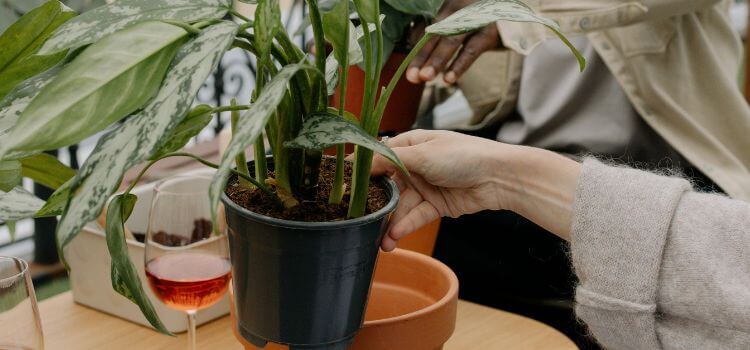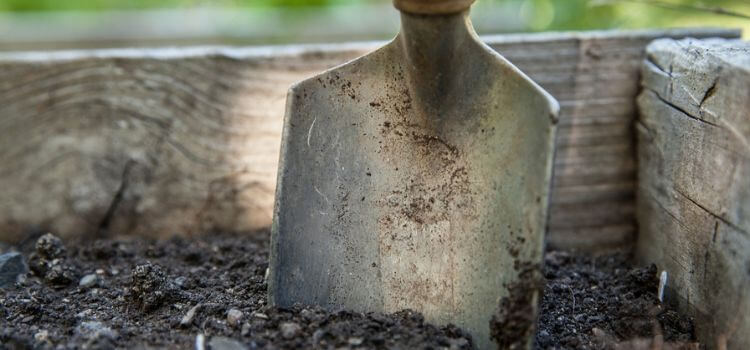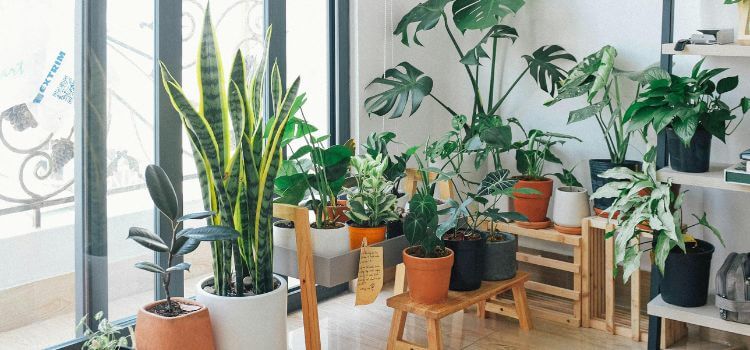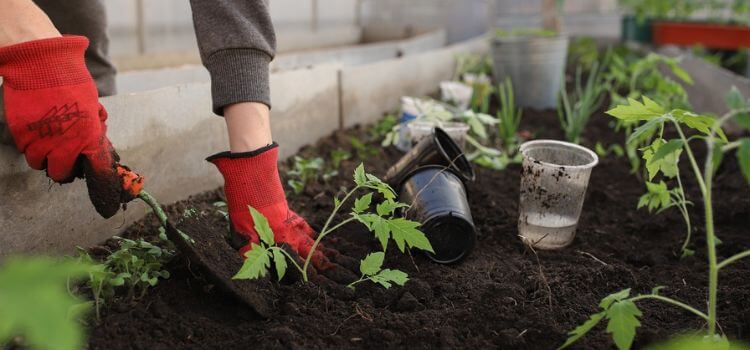As an Amazon Associate, I earn from qualifying purchases.
No, garden soil is not suitable for potted plants. It can lead to poor drainage and compacted roots.
Potted plants thrive best in a well-draining potting mix. Garden soil tends to be heavy and can suffocate plant roots, leading to poor growth or plant death. Potting mixes are specifically formulated to provide aeration, moisture retention, and nutrients ideal for container gardening.
They often contain ingredients like peat moss, perlite, and compost, which help maintain a balanced environment for plants. Using garden soil in pots can also introduce pests and diseases to your plants. For healthy, vibrant potted plants, always opt for a high-quality potting mix designed for container use. This ensures optimal growth conditions and better overall plant health.
What Is Garden Soil?
Many gardening enthusiasts often wonder, can you use garden soil for potted plants? This question arises because garden soil is readily available and seems like a convenient choice. Understanding what garden soil is can help you make an informed decision.
Garden soil is the top layer of soil found in gardens and landscapes. It is a mix of organic matter, minerals, and nutrients that support plant growth. This soil is rich in decomposed plant material, which provides essential nutrients to plants.
What Is Potting Mix?
Using garden soil for potted plants might seem convenient, but it can cause issues. Garden soil may need to have the proper structure or nutrients for container plants. This is where the potting mix comes in. Understanding the potting mix can help you make better choices for your potted plants.
Potting mix is a unique soil blend made for container gardening. It differs significantly from garden soil. Potting mix contains a combination of ingredients that ensure good aeration, drainage, and nutrient retention. These ingredients often include peat moss, vermiculite, and perlite.
Differences In Garden Soil And Potting Mix
Many gardeners wonder, “Can you use garden soil for potted plants?” Understanding the differences between garden soil and potting mix is essential. While both serve to nourish plants, their compositions make them suitable for different purposes.

Composition Of Garden Soil
Garden soil is the natural soil found in your backyard. It contains a mix of sand, silt, and clay. The balance of these components affects how well the soil drains and holds nutrients. Garden soil also has organic matter like decomposed leaves and plant material. This organic matter provides nutrients but can also harbor pests and diseases.
Table showing the components of garden soil:
| Component | Description |
|---|---|
| Sand | Provides drainage but dries out quickly. |
| Silt | Holds moisture and nutrients but can compact easily. |
| Clay | Holds nutrients well but drains poorly. |
| Organic Matter | Improves nutrient content but may contain pests. |
Composition Of Potting Mix
Potting mix, also known as potting soil, is specially formulated for container gardening. It is usually a blend of peat moss, perlite, vermiculite, and composted materials. This mix ensures good drainage and aeration, which are crucial for potted plants. Potting mix is usually sterilized to eliminate pests and diseases, making it a safer choice for indoor plants.
Table showing the components of potting mix:
| Component | Description |
|---|---|
| Peat Moss | Holds moisture and provides a lightweight base. |
| Perlite | Improves drainage and aeration. |
| Vermiculite | Helps retain moisture and nutrients. |
| Composted Materials | Provides essential nutrients for plant growth. |
Challenges Of Using Garden Soil For Potted Plants
Thinking about using garden soil for your potted plants? Garden soil might seem like an easy and cost-effective option. But before you fill your pots, consider the challenges. Using garden soil for potted plants can create several problems.
Drainage Issues
Garden soil often causes drainage problems in pots. It’s usually denser and heavier than potting soil. This density restricts airflow and water movement. Poor drainage can lead to soggy roots. Waterlogged roots may cause root rot and harm the plant. To keep your plants healthy, they need well-draining soil. Potting soil is designed to ensure proper drainage. It helps prevent water from sitting at the bottom of the pot.
Nutrient Imbalance
Garden soil may need to provide balanced nutrients for potted plants. Different plants require different nutrient levels. Garden soil might not meet these needs. Over time, nutrients in garden soil can be depleted. This leaves your plants undernourished. Potting soil is enriched with the proper nutrients. It ensures your plants get what they need to thrive. Balanced nutrients are vital for growth and health.
Benefits Of Using Garden Soil For Potted Plants
Using garden soil for potted plants can be a practical choice. This approach offers several advantages that enhance plant growth and save money.
Cost-effective Option
Garden soil can be a cost-effective option for potted plants. Buying commercial potting mix can be expensive, especially for large containers. Using garden soil reduces the need to purchase additional products.

Many gardeners already have garden soil at home. This makes it a convenient and budget-friendly choice. Instead of spending money on potting mix, you can use what you already have. This approach helps in cutting gardening expenses. It also ensures that your plants receive the nutrients they need without breaking the bank.
Natural Soil Microorganisms
Garden soil is rich in natural soil microorganisms. These microorganisms play a vital role in plant health. They help in breaking down organic matter, releasing nutrients that plants can absorb.
When you use garden soil, you introduce these beneficial microbes into your pots. This can lead to healthier root systems and more vigorous plants. The presence of these microorganisms can improve the soil structure. This makes it easier for roots to grow and access water and nutrients.
In summary, using garden soil for potted plants can be an innovative and economical choice. It provides natural benefits that support plant growth and health.
Preparation And Treatment Of Garden Soil For Potted Plants
Using garden soil for potted plants can save money and resources. But garden soil needs proper preparation and treatment. This ensures healthy growth for your potted plants.
Sterilization Methods
Garden soil often contains pests, diseases, and weed seeds. Sterilizing soil removes these harmful elements. One standard method is baking the soil. Spread the soil on a baking sheet and heat it in the oven at 180°F for 30 minutes. Ensure the soil reaches a temperature of 180°F throughout.
Another method is solarization. Place the soil in clear plastic bags and leave them in the sun for 4-6 weeks. This method uses the sun’s heat to kill pests and diseases. For small batches, you can also use a microwave. Place soil in a microwave-safe container and heat it on high for 90 seconds per pound.
Adding Amendments
Garden soil lacks the necessary nutrients for potted plants. Adding organic matter can improve soil quality. Compost provides essential nutrients and improves soil structure. Perlite or vermiculite improves drainage and aeration.
Mixing garden soil with peat moss helps retain moisture. Sand can also be added to improve drainage. A balanced mix could be one part garden soil, one part compost, and one part perlite or vermiculite. This mix provides a nutrient-rich and well-draining medium for potted plants.
Tips For Successful Gardening With Garden Soil In Pots
Using garden soil for potted plants can take time and effort. Potted plants need different care than those in the ground. With the right tips, you can succeed. Here are some tips for successful gardening with garden soil in pots.
Choosing The Right Plants
Not all plants thrive in garden soil. Select plants that adapt well to dense soil. Succulents, herbs, and some perennials do well. Avoid plants that need light, airy soil. They might struggle in garden soil. Do some research on the plants you want to grow.
Monitoring Moisture Levels
Garden soil retains moisture more than potting mix. Overwatering can harm your plants. Check the soil moisture regularly. Stick your finger about an inch into the soil. If it feels dry, it’s time to water. Use pots with drainage holes. This helps excess water escape, preventing root rot.
Alternative Soil Options For Potted Plants
Garden soil often needs the right balance of nutrients and drainage for potted plants. Using garden soil can lead to poor growth and root rot. Thankfully, there are alternative soil options for potted plants that ensure they thrive. This section will explore two popular choices: commercial potting mix and DIY potting mix recipes.
Commercial Potting Mix
Commercial potting mix is a ready-made solution. It’s designed specifically for potted plants. These mixes provide the ideal balance of nutrients, aeration, and moisture retention. They are usually free of pests and diseases, ensuring your plants stay healthy.
Many brands offer specialized mixes. For example, some are tailored for succulents, while others are ideal for flowering plants. Using commercial potting mix can save time and effort, providing a convenient option for both novice and experienced gardeners.
Here’s a quick comparison of popular commercial potting mixes:
| Brand | Suitable for | Key Features |
|---|---|---|
| Miracle-Gro | All-purpose | Enriched with plant food |
| FoxFarm | Organic growing | Contains earthworm castings |
| Espoma | Indoor plants | Enhanced with myco-tone |
DIY Potting Mix Recipes
Creating a DIY potting mix can be fun and cost-effective. You can tailor the mix to suit specific plant needs. A basic DIY recipe often includes three main ingredients: peat moss, perlite, and vermiculite.
Here’s a simple recipe to get started:
- Peat moss: Helps retain moisture.
- Perlite: Enhances aeration and drainage.
- Vermiculite: Improves water retention.
Mix equal parts of these ingredients. Adjust based on plant requirements. For succulents, add more perlite for better drainage. For moisture-loving plants, increase the peat-moss ratio. Experiment to find the perfect balance.
Using a DIY mix allows for customization. Plus, it’s a great way to ensure organic growth. The satisfaction of creating your blend is a bonus.

Frequently Asked Questions
Using garden soil for potted plants can lead to poor drainage and compacted roots. It might harbour pests and diseases. For best results, use a high-quality potting mix designed for containers.
Using garden soil mix in pots could be better. It can compact, drain poorly, and lack necessary nutrients. Opt for potting mix instead.
Using garden soil in pots is not recommended. It can compact, causing poor drainage and root issues. Use potting soil for best results.
Mix garden soil with compost, peat moss, and perlite. Sterilize the mix to kill pests and weeds. Ensure proper drainage.
Conclusion
Using garden soil for potted plants can be challenging. It’s often dense and needs proper drainage. Opt for a quality potting mix for best results. This ensures your potted plants get the nutrients and aeration they need.
Happy gardening, and enjoy your thriving indoor greenery!

